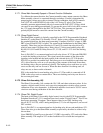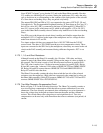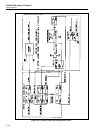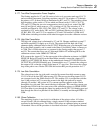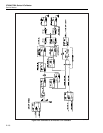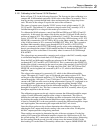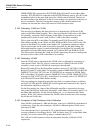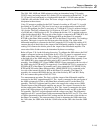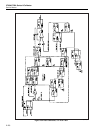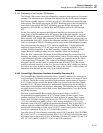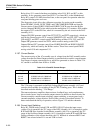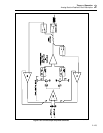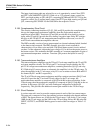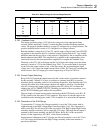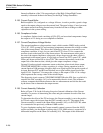
Theory of Operation
Analog Section Detailed Circuit Description
2
2-119
The 10Ω, 19Ω, 100Ω and 190Ω resistance values are determined using 2V from the
2/5/10V source and using internal 10:1 divider (Z5) in conjunction with the DAC. To get
2V, Q2 and Q3 are both turned on, which parallels both the 11.535 kΩ value and the
3.846 kΩ value with the 50 kΩ value. The lower voltage is required to lower the power
dissipation in the resistors.
Using 2V presents a problem for the DAC. Instead of working at 10V and 1V, it would
be working at 2V and 0.2V. This level is too low to get accurate results from the DAC.
To solve this problem, the DAC is used only at 2V and the 0.2V level is achieved using a
10:1 divider. The DAC calibrates this 10:1 divider at 10V and 1V. The divider is made
of a 90 kΩ and a 10 kΩ resistor in Z5. To calibrate the divider, 10V is applied to the top
of the divider through K18. The low side of the divider is connected to R COM (K21 and
K27), DAC OUT LO (K21) and S COM through K20 on the Ohms Cal assembly,
K27A/B on the Ohms Main assembly and K22 on the Ohms Cal assembly. Two readings
are taken. Their ratio is equal to the division ratio of the divider. The -input of the
differential amplifier is connected to the DAC output by K12. For the first reading, K15
connects the top of the divider to the +input of the differential amplifier. For the second
reading, K16 connects the divider point to the +input of the differential amplifier. The
exact ratio of this divider can now be determined by these two readings.
Refer to Figure 2-34 for the following discussion. To calibrate the 10Ω resistor, the DAC
output is connected to the top of the divider by K14. The 2V source is connected across
100Ω on the Ohms Main assembly. This is done by 10V OUT HI, set to 2V, connected
to the high side of the 100Ω string by K33 and K23A on the Ohms Main assembly. Line
10V SENSE HI is also connected to this point by K31A and K32A on the Ohms
assembly. Line OHMS OUT LO and OHMS SENSE LO are connected to the low side of
the 100Ω string by K27B and K27A respectively. Line OHMS OUT LO is connected to
SCOM by K22 on the Ohms Cal assembly and is also connected to 10V SENSE LO by
K32B and K31B on the Ohms Main assembly. OHMS SENSE LO is connected to the
low side of the internal divider by K20 on the Ohms Cal assembly. The Ohms Cal
assembly also connects RCOM to the low side of the divider by K27 and K21. Relay
K21 also connects this point to DAC OUT LO.
Two measurements are taken. The first is with the +input of the differential amplifier
connected to the DAC output through K15. The - input is connected to the sense point of
the 100Ω resistance by K24A on the Ohms Main assembly and K2 on the Ohms Cal
assembly. The DAC is adjusted until its value is the same as the voltage across 100Ω.
Then the inputs of the differential amplifier are moved. The +input is connected to the
divider output on the Ohms Cal assembly by K16. The - input is connected to the sense
point of the 10Ω resistance by K26A on the Ohms Main assembly and K2 on the Ohms
Cal assembly. The DAC is again adjusted until the voltages are equal. The differential
amplifier sees 0.2V on each input for this measurement but the DAC is at 2V. The value
of 10Ω is determined from the two DAC settings and the division ratio of the divider on
the Ohms Cal assembly. The same procedure is used to determine the 100Ω value from
the 1 kΩ value, the 190Ω value from the 1.9 kΩ value and the 19Ω value from the 190Ω
value.




